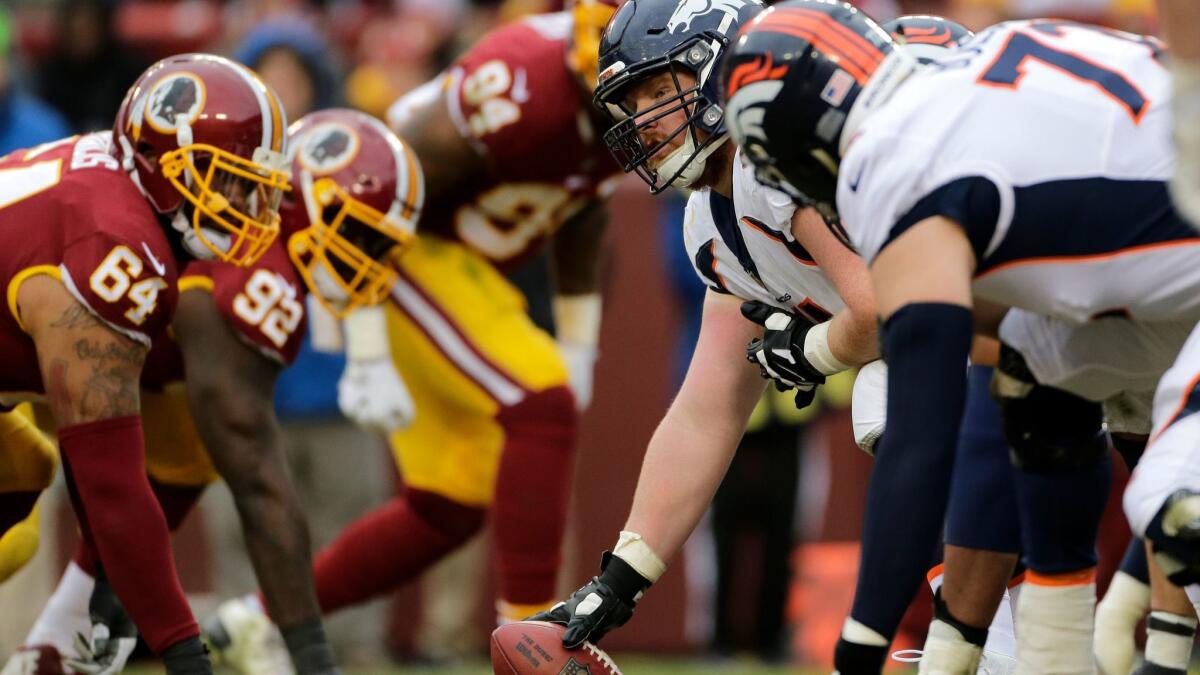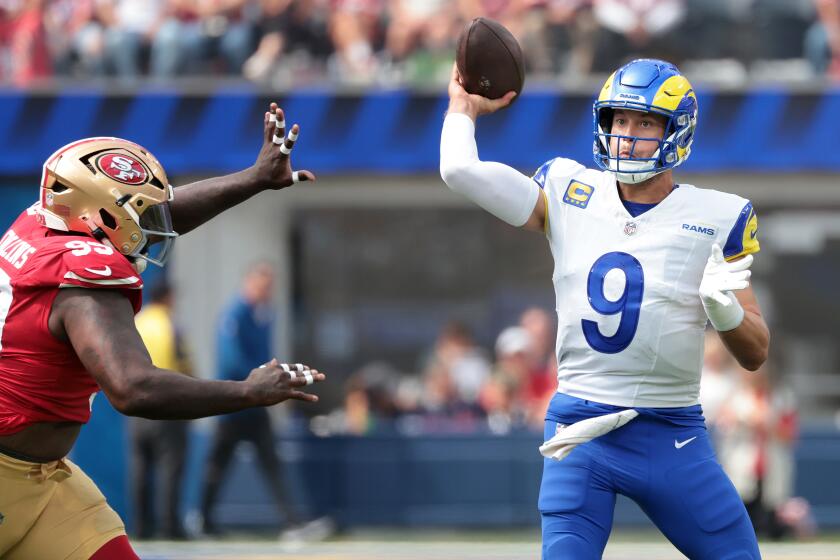Ask Farmer: Is it a defensive advantage when guard taps center?

- Share via
Have a question about the NFL? Ask Times NFL writer Sam Farmer, and he will answer as many as he can online and in the Sunday editions of the newspaper throughout the season. Email questions to: [email protected]
If the guard taps the center to go ahead with snap, doesn’t that give the defense an edge on the imminent play?
Rick Immel
Chatsworth
Farmer: Got the perfect guy to answer this. Nick Hardwick played center for the San Diego Chargers in 2008 when offensive line coach Hal Hunter devised the system. “We came up with that to deal with really complex blitz packages,” Hardwick said. “We couldn’t identify the blitzes with the guards. It was just not efficient to do it like that, with my head between my legs.” So the onus was on Hardwick to sniff out the blitzes and communicate what he saw to his fellow linemen. That required him to keep his head up, meaning in a loud situation he couldn’t get the visual cues to know when the quarterback was ready to receive the snap.
“We came up with this little thing where the guard would hit me in the side, and then I would know to snap it,” he said. But, as noted in the question, tap-snap would be far too obvious and defeat the purpose by giving the defensive line a telltale cue. The tap became the starting point for Hardwick, to let him know Philip Rivers was ready and the wheels were in motion. Hardwick could still make all of his reads and communications before snapping the ball.
So how would Rivers know when the ball was coming? The snap count was predicated on Hardwick raising and lowering his head. “On a standard count, I would lower my head, raise it up, and in my head I would say, ‘Set, hut,’ and on that I would snap it,” Hardwick said. “Then there would be a ‘Set, hut, hut’ — all in my head, never verbalized — and that was another speed. And then there was another speed where I’d put my head down, and then when I came back up, everyone was taking off.” All of that was predetermined in the huddle.
Because the NFL is a copycat league, teams from coast to coast incorporated their own version of the system.
::
What do coaches do with the accumulated team gear (jackets, hats, shirts, etc.) when they get fired?
Mark Murphy
Camarillo
Farmer: Checked with two assistant coaches and some players, and they all gave the same answer: They move on when they leave a team and either give the stuff away to friends or charity.
“I pretty much just dump it or give it away,” said quarterback Jeff Garcia, who played for seven NFL teams. “I’m not really a guy who, when I go to the gym, is sporting the team I played for in my gear. I don’t have anything in my closet from my playing days.”
Defensive end Dwight Freeney, now with Detroit, doesn’t keep anything from his five previous teams — not even his jerseys. “From team to team as it goes, I just keep moving on,” he said. “That chapter is closed.”
Twitter: @LATimesfarmer
More to Read
Go beyond the scoreboard
Get the latest on L.A.'s teams in the daily Sports Report newsletter.
You may occasionally receive promotional content from the Los Angeles Times.











